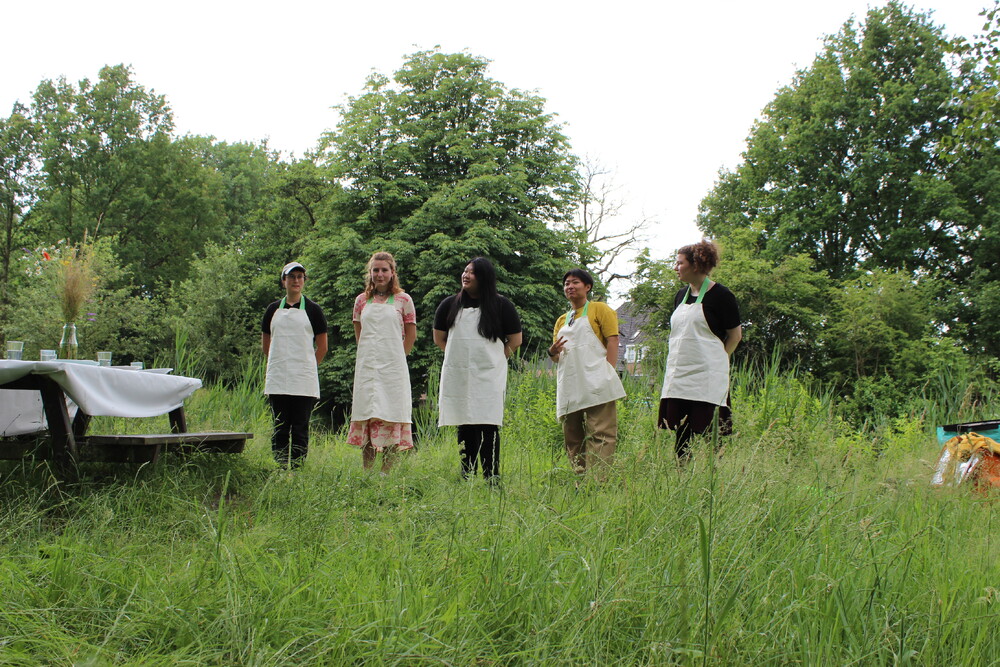
Van Gogh National Park
In spring 2021, seventeen third year Bachelor students from Studio Urgencies collaborated with the Van Gogh National Park in a project called ‘City Circles’. Initiated by Irene Fortuyn, City Circles is a research methodology which investigates the human factor within an urban circle with a diameter of one kilometre. Due to Covid restrictions, this year’s edition took place in the vicinity of Eindhoven. With DAE pinpointed as the centre of a circle with a diameter of ten kilometres, students were able to investigate the relation between the natural and the urban landscape. Over five intense weeks, the students conducted their research on the city based on the following themes: Learning, Food, Materiality, Craftsmanship, Flora/Fauna, Human Interaction, Health, and Economy. This research led to seventeen design projects with proposals and interventions for Eindhoven and the Van Gogh National Park.
The Van Gogh National Park is formed by a large, centuries-old natural and cultural area. Spanning the Brabant cities of Den Bosch, Helmond, Eindhoven, Tilburg, and Breda, the Park marks the diverse landscape that inspired many of Vincent van Gogh’s artworks. Alongside the preservation and enhancement of this natural landscape is also an investment in Brabant’s knowledge economy. As a hotspot for innovation, technology, and design, initiatives and partnerships within the Park aim to strengthen this position by promoting sustainable tourism, future-proofing agriculture and farming, offering new perspectives for cultural heritage, and creating an attractive and internationally-oriented business climate.
“We believe in the valuable combination of imagination, perseverance, and collaboration for strengthening nature and the quality of life and vitality of our environment”, says Frank van den Eijnden, operational director of the Van Gogh National Park. “That is precisely the reason why a collaboration with Design Academy Eindhoven fits so well with the movement we want to establish. The new energy that the students can release with a rebellious approach and non-conformist solutions inspire the more than fifty partners who together form the Van Gogh National Park. We believe in the power of free thinkers and innovators to shape the landscape of the future together, with Vincent van Gogh as the starting point and young designers, artists, and creatives as our contemporary source of inspiration.”
At the culmination of the project, the students presented their ideas to Van Gogh National Park and Province Brabant at Sectie C. As part of this assignment, they also designed and published an exhibition catalogue, entitled ‘Local Lenses On the Van Gogh National Park’, and curated the work of their fellow students in a self-chosen public space. Project concepts ranged from products to performance, including Juno Brown’s ‘Catching Shadows’, in which public furniture is treated with cyanotype chemicals to create impressions of both the surrounding environment and the interactions with its users. Brown highlights the use of ephemeral and non-physical environmental elements as a design tool, and also references van Gogh’s impressionist style. Many projects also aimed to strengthen the connection between local communities and the natural environment within the Park, including Maayke Mutsaerd’s ‘Dust to Bloom’, which proposes to replace cemetery tombstones with native flowers - specifically a selection of 36 endangered native Dutch plants, representing the 26 letters of the alphabet and 10 numbers - in order to promote biodiversity as well as a peaceful resting place. Other projects offer an educational approach, such as Marion Cevaer’s ‘Nomadic Museum’, in which a set of table- and kitchenware also functions as a practical botanical guide to Dutch flora. Focusing on five plants - heather, horsetail, reed, rapeseed, and Scots pine - the handmade ceramics can be purchased as a slow-craft souvenir or a representation of local Brabant identity and culture.
The collaboration with Van Gogh National Park took place from 22 February until 30 June 2021, and was carried out under Covid regulations.
→ Text by Zeniya Vreugdenhil


